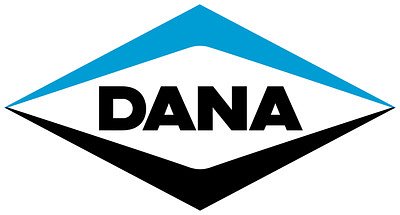
Allison Transmission's $2.7B Deal to Reshape Off-Highway Vehicle Landscape
Dana's divestiture of its Off-Highway business to Allison Transmission signals a strategic shift within the industry, driving consolidation and accelerating the adoption of electric and autonomous technologies.
Allison Transmission's $2.7B Deal to Reshape Off-Highway Vehicle Landscape
NEW YORK, NY – November 19, 2025
Strategic Realignment for Dana Incorporated
Dana Incorporated has finalized its agreement to sell its Off-Highway business to Allison Transmission for $2.7 billion, a move signaling a significant strategic shift for both companies and a potential reshaping of the off-highway vehicle industry. The transaction, with regulatory approvals secured, is expected to close at or near the end of 2025. For Dana, the divestiture allows the company to streamline its operations, strengthen its financial position, and focus on core strengths, while simultaneously returning capital to shareholders. “This is about sharpening our focus,” explained one industry analyst. “Dana is making a clear statement about where it sees future growth.”
The sale will generate approximately $2.4 billion in net cash proceeds for Dana, of which $600 million will be returned to shareholders this year, with a further $550 million committed under a $1 billion capital return program through 2027. The remaining proceeds will be used to pay down approximately $2 billion in debt, significantly improving Dana’s financial leverage. In 2024, Dana’s Off-Highway business contributed $2.8 billion to the company’s total revenue of $7.7 billion, representing a substantial portion of its overall earnings. This highlights the strategic importance of the decision for Dana and the significant impact it will have on the company’s financial trajectory.
Allison Transmission's Expansion into a Growing Market
For Allison Transmission, the acquisition represents a transformative step in expanding its portfolio and strengthening its position in the rapidly growing off-highway vehicle market. The deal aligns with Allison’s long-term growth strategy of diversifying its revenue streams and capitalizing on emerging trends in the industry. “This isn’t just about adding revenue; it's about gaining access to new technologies and markets,” said a source close to the deal. The acquisition instantly positions Allison as a more comprehensive powertrain solutions provider, offering a wider range of products and services to customers in sectors like construction, agriculture, mining, and material handling.
The Off-Highway business’s expertise in hybrid and electric drivetrain systems is particularly valuable for Allison, as the demand for sustainable and environmentally friendly solutions continues to increase. The combined entity will be well-positioned to lead the transition towards electrification in the off-highway vehicle industry. Allison anticipates generating approximately $120 million in annual run-rate synergies by 2027, driven by cost reductions and revenue cross-selling opportunities. The deal is projected to nearly double Allison’s net sales to approximately $6 billion, demonstrating the scale of the opportunity.
Industry Consolidation and the Rise of Electrification
The acquisition is the latest example of consolidation within the off-highway vehicle industry, driven by the need for manufacturers to achieve scale, reduce costs, and invest in new technologies. This trend is expected to continue as the industry undergoes a period of rapid transformation, fueled by the adoption of electric and autonomous technologies. The global off-highway vehicles market is projected to reach $895.9 billion by 2034, with the electric propulsion segment anticipated to experience the highest growth rate during this period.
“We're seeing a wave of consolidation as companies try to build the scale and capabilities they need to compete in this evolving landscape,” explained one market observer. The push for sustainability and the increasing demand for more efficient and reliable machines are driving innovation and forcing manufacturers to rethink their business models. The integration of digital technologies, such as data analytics and predictive maintenance, is also playing a key role in improving performance and reducing downtime. The demand for robust power and efficiency in the face of stringent regulations is a key driver of the ongoing changes. Manufacturers are racing to address these concerns while meeting the performance standards expected in the field.
Looking Ahead: Opportunities and Challenges
While the acquisition presents significant opportunities for both Dana and Allison Transmission, it also poses certain challenges. Successfully integrating the two businesses will require careful planning and execution, as well as a commitment to fostering a shared culture. The company will need to effectively manage the transition process and ensure that it can capitalize on the synergies identified. The long-term success of the deal will depend on the ability to innovate and adapt to the changing needs of the market.
The move also sends a clear message to competitors, like Caterpillar and Deere, who are also investing heavily in electrification and automation. The competitive landscape is expected to intensify as these companies vie for market share. The companies that can successfully navigate the challenges and capitalize on the opportunities will be best positioned to lead the industry into the future. The combination of experience, expertise, and a proactive approach to innovation will be critical for continued success.
📝 This article is still being updated
Are you a relevant expert who could contribute your opinion or insights to this article? We'd love to hear from you. We will give you full credit for your contribution.
Contribute Your Expertise →